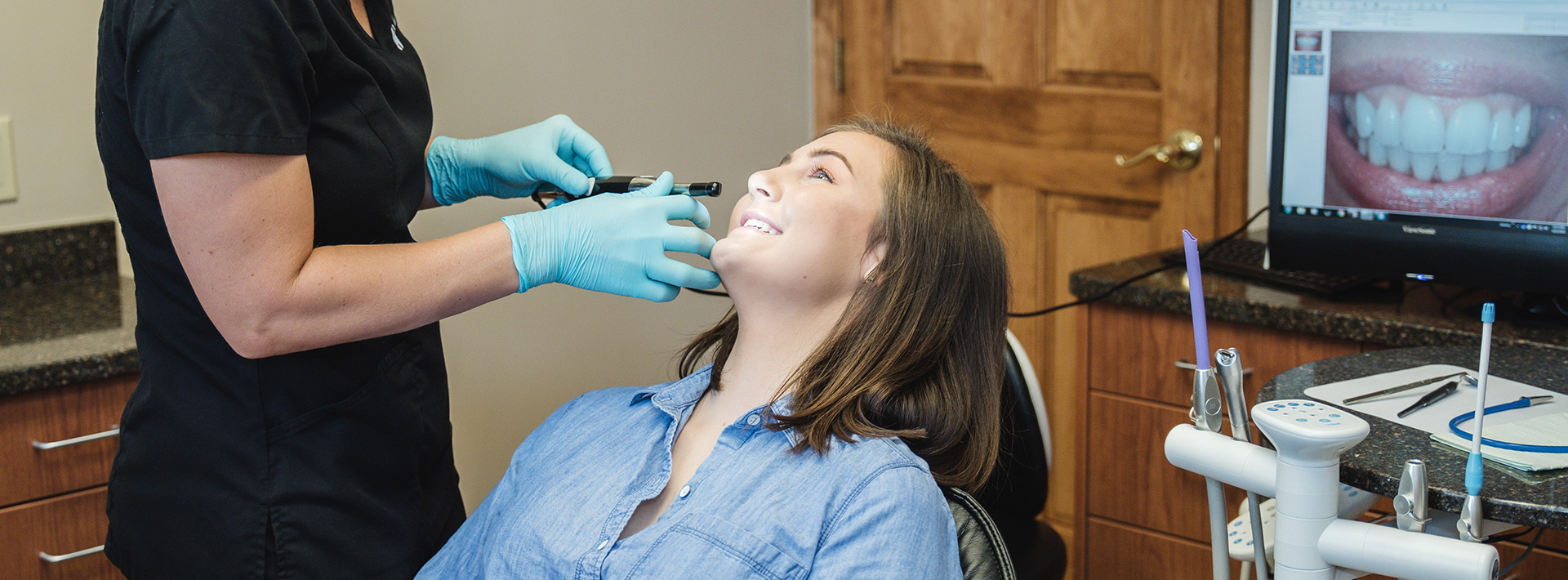
611 N. Broad Street, Lancaster, OH 43130
(740) 687-6105 | Appointments
(740) 687-6105 | General Information

Your bones and the surfaces between your teeth can’t be viewed by the naked eye, so internal imaging is an essential element of dental treatment. It factors into all of the types of dental care, ranging from routine exams to dental implant placement. Our office’s technology makes imaging safer, easier and more convenient to review and transmit to others who might need to review such images. Here are a few ways in which technology improves our imaging capacity.
Intraoral Cameras: These are specialized cameras at the end of a wand that can be easily manipulated throughout the mouth and can be placed in the oral cavity to capture images of a variety of tooth surfaces. Both the patient and the dentist can view the images in real time via a connected monitor. The dentist can magnify points of interest for more detailed examination, as well as for educating the patient about oral diseases and treatment options. Intraoral cameras can be used to take still images or video.
Digital Radiography: Patients routinely get x-rays at the dentist, typically on an annual basis, to monitor the health of the jaws as well as keep an eye on the surfaces of the teeth that are obscured from view, such as interior surfaces where teeth meet. Traditional x-rays require a development process and result in films that can be more challenging to handle and share among providers. Digital x-rays improve on this imaging by eliminating the need to develop the film (and the chemicals involved in that process), and they expose the patient to lower levels of radiation as well. Additionally, the dentist can rotate these images easily on the computer screen to get a better perspective on the targeted area.
Cone Beam CT Scan: Some treatments, such as dental implant placement and other surgical procedures, require the dentist to anticipate the three-dimensional treatment field. Standard x-ray technology may not adequately represent the treatment site. Enter the cone beam CT scanner, which compiles an array of two-dimensional images into a realistic, 3-D image of the treatment field. This allows the dentist to plan the procedure and “practice” it in advance of the appointment, resulting in more predictable treatment outcomes.
Keep in mind that the images captured by these methods are stored in digital form, which means that they can easily be transmitted to a specialist for review for further treatment or to an insurance provider to confirm the diagnosis and need for the treatment. This is another benefit of the imaging technology used in our office.
Advanced instruments can make certain treatment processes less invasive, resulting in less disruption to a patient’s routine when compared to conventional techniques that require additional healing time. This is particularly apparent in the case of soft tissue lasers, which are tremendously useful in treating gum disease. The lasers can be used to excise diseased gum tissue with high specificity and limited effects on surrounding tissue. Unlike traditional techniques using scalpels and sutures, the use of soft tissue lasers in treatment results in a faster healing process and reduced risk of infection.
Other types of technology, such as ultrasonic cleaning instruments, can take less time and lead to better treatment outcomes, as well.
When your dentist utilizes the most advanced technology available, it only enhances your treatment and improves your chances of better treatment outcomes. You will have a streamlined experience and are likely to spend less time in our office as a result of our incorporation of technology.
In addition to implementing available current technology, it’s also important that your dental provider makes an effort to keep updated on the technological developments on the horizon that may further improve diagnosis and treatment. We do this by prioritizing continuing education activities, as well as maintaining relationships with vendors who are on the cutting edge of developing such innovations. We want to optimize the patient experience, and technology is an important component that helps us to achieve that goal.
To learn more about the types of technology we have incorporated into our dental practice, call our office and speak to one of our knowledgeable, friendly staff members.